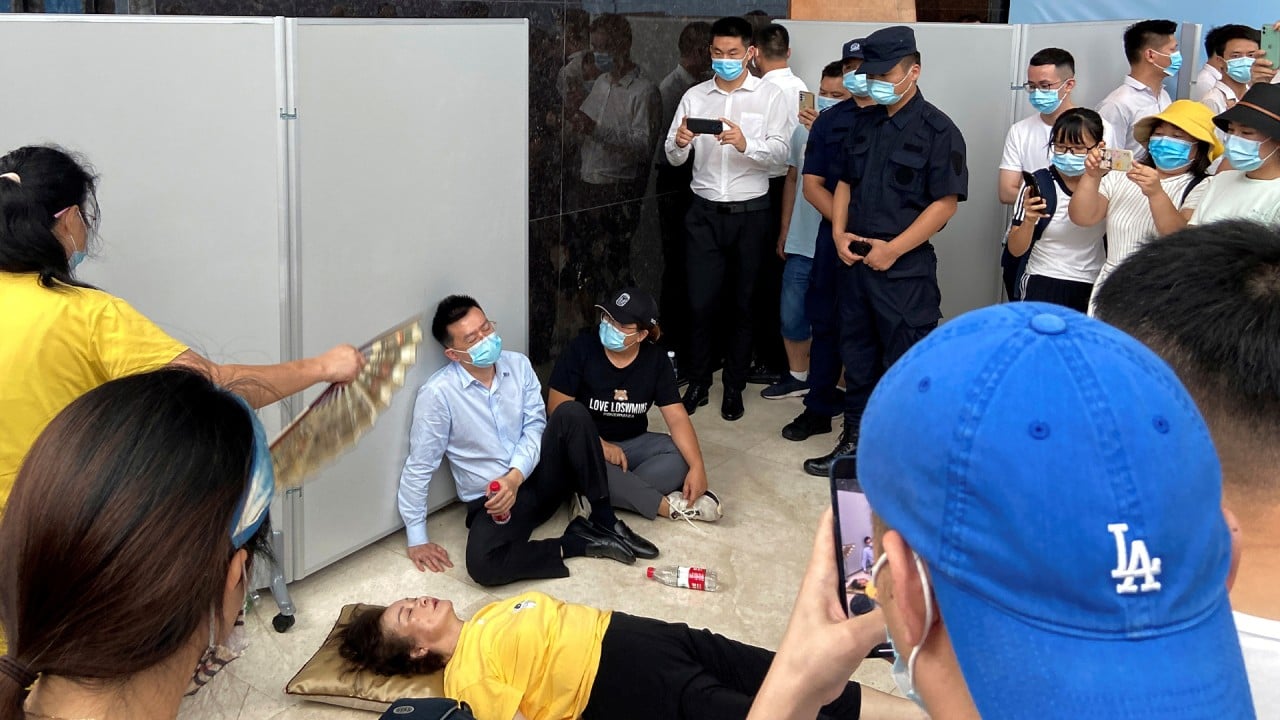
China Evergrande crisis caused by ‘poor management’, but an exception in healthy property market, central bank says
- China’s central bank says property developer Evergrande Group failed to act judiciously in the face of changing market conditions
- But it stressed China’s property sector is healthy overall and any ‘spillover to the financial industry is controllable’
The comments from Zou Lan, head of the financial department at the People’s Bank of China (PBOC), come amid heightened market concern about worsening debt problems in China’s property market, which has for decades been a main engine of growth in the world’s No 2 economy.
Fears about a fast-spreading contagion in the US$5 trillion property sector have sparked a sell off of bonds from Chinese developers, while US Secretary of State Antony Blinken said earlier this month that China must “act responsibly” in addressing the potential economic impacts of Evergrande’s demise.
China’s financial regulators under the watch of the central bank are drawing a distance from Evergrande, after a high-profile crackdown on the nation’s most profligate leveraged asset buyers in 2017, including Anbang Group, Dalian Wanda Group and HNA Group, but which mostly left Evergrande off the hook except for a rap on the knuckles for its wealth management unit.
It had poor management in recent years. It failed to run its businesses cautiously according to changes in market conditions, but expanded blindly
As the developer built up most of its borrowings over the past five years, the financial regulators are being asked how Evergrande came to amass almost the equivalent of 2 per cent of the entire nation’s debt.
“It had poor management in recent years. It failed to run its businesses cautiously according to changes in market conditions, but expanded blindly,” Zou said at a media briefing in Beijing. “This led to the deterioration of operational and financial indicators and eventually broke into a crisis.”
“Evergrande’s financial liabilities are less than one third [of its total business], while its creditors are scattered,” Zou said. “Exposure for individual banks is small. Overall, the risk of spillover to the financial industry is controllable.”
The Shenzhen-based company, which is China’s largest developer in terms of 2020 sales revenue, tapped bond markets to raise hundreds of billions of yuan in bank loans as it sought to expand its core residential housing business and diversify its business into areas as varied as new energy vehicle production and a soccer team ownership.

02:28
Angry protest at headquarters of China Evergrande as property giant faces liquidity crunch
Property developments account for about 60 per cent of its business, government data showed.
“We are urging the acceleration of asset disposal and resumption of construction … Financial authorities will cooperate with urban planning agencies and local governments to provide financing support to restart construction,” Zou said.
More than a dozen medium-sized banks disclosed their business connections to worried investors last month, with regional lender Zheshang Bank, for instance, reporting exposure of 3.8 billion yuan.
China Construction Bank, the country’s second largest lender, said on Friday its exposure to Evergrande is relatively small and guaranteed against collateral.
The central bank and the banking regulator – the China Banking and Insurance Regulatory Commission (CBIRC) – summoned Evergrande executives in August, asking them to “keep its operations stable, actively solve debt risks and safeguard the stability of property market and finance”.
Fearful of a housing bubble, Beijing has imposed property curbs in an attempt to cool the country’s real estate market. Money supply and bank lending data for September has begun to indicate weaker credit demand, with medium and long-term household borrowing – widely used as proxy for mortgage loans – at 466.7 trillion yuan, a fall of 169.5 billion yuan from a year earlier.
Zou said mortgage restrictions were occurring in “a few cities” because of fast price hikes, but the situation would return to normal when the property market stabilised.
He acknowledged the relatively big decline in property sector loan growth, calling it a knee-jerk reaction comparable to the interbank rate hike immediately after the takeover of Baoshang Bank in 2019.
“The central bank and the CBIRC convened a meeting at the end of September, asking major banks to accurately implement the government rules to keep orderly lending to the property sector and safeguard its stable development,” he said.
We now urge issuers to strictly abide by market rules, appropriately handle their debt and actively fulfil their obligations
“Take Huarong for example, market sentiment is recovering after strategic investors were introduced in August,” he said.
“We now urge issuers to strictly abide by market rules, appropriately handle their debt and actively fulfil their obligations.”
In June, outstanding loans to property developers and for mortgages totalled 14.2 trillion yuan and 36.6 trillion yuan respectively, accounting for 7.4 per cent and 19.1 per cent of all bank loans.

